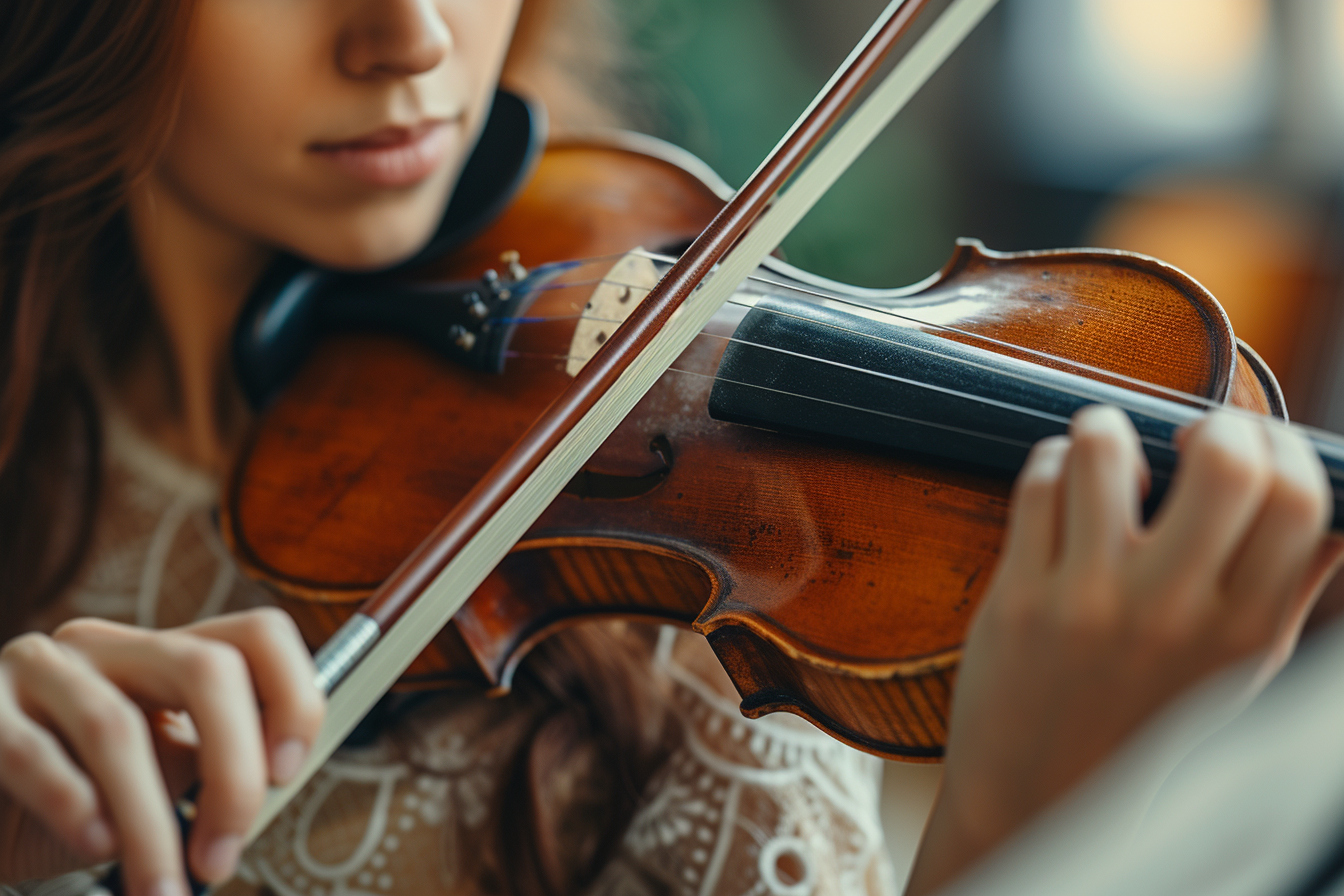The violin, with its rich heritage and complex tonality, can seem daunting to the novice player. Yet, with methodical practice and the right techniques, beginners can embark on a rewarding journey towards musical proficiency. In this piece, we explore step-by-step methods designed to help fledgling violinists develop the skills essential for mastering this elegant instrument.
The basics: understanding your violin
Setting up your instrument
Before delving into practice, familiarize yourself with your violin. Ensure that the bridge is properly aligned, the strings are tuned to the standard G-D-A-E from lowest to highest, and that your bow is adequately rosined. Additionally, confirm that the chin rest and shoulder rest are adjusted to allow for a comfortable and ergonomic playing position.
Proper posture and hold
A strong foundation begins with posture. Stand straight with feet shoulder-width apart, holding the violin with your left hand and placing it on your left collarbone. The instrument should be parallel to the floor, angled slightly inward. Gripping the bow requires a relaxed hold; your thumb should curve inward, making contact at the frog, while your fingers drape gently over the stick.
The fundamentals: bowing and fingering techniques
Bowing skills
The quality of sound produced by the violin lies significantly in bowing practices. Beginners must develop a straight and even bow stroke, which includes understanding bow placement between the bridge and fingerboard, and mastering the coordination between arm and wrist movements. Exercises such as long bow strokes on open strings can help inculcate consistency and control.
Dynamic Expression
Learning to play with varying dynamics is crucial. Start with simple exercises that involve crescendos and decrescendos, facilitating the use of more or less bow pressure and speed.
Fingering and intonation
Accuracy of pitch, or intonation, is a defining aspect of good violin playing. Initially, finger tapes can serve as visual guides for correct finger placement. Daily exercises, such as scales and arpeggios, offer systematic practice to improve dexterity while ensuring each note is hit with precision.
Left-hand Technique
The left hand must remain relaxed, with fingertips pressing lightly but firmly on the strings. Work on finger strength and independence, starting with simple exercises varying in complexity as your proficiency grows.
Progression: scales, etudes, and repertoire
Scales and arpeggios
Scales are the building blocks of music, providing a framework for understanding keys, notes, and finger placement. Incorporating a variety of scales into your daily practice routine is essential.
Etudes for Skill Development
Etudes, or study pieces, are designed to focus on specific technical challenges. They hone in on particular skills and are an effective means of addressing weaknesses in your playing.
Expanding your repertoire
Begin with simple songs and gradually move towards more complex compositions. Each new piece should present a challenge yet be achievable with practice. Learning repertoire is not only enjoyable; it showcases the culmination of your technical skills in an artistic manner.
Technique enhancement: articulation and vibrato
Articulation mastery
Articulation is the clarity with which notes are executed. Start with simple techniques like staccato (short notes) and legato (smooth, connected notes) and progress to more intricate methods like spiccato (a controlled bouncing of the bow).
Developing Vibrato
Vibrato adds warmth and emotion to the sound. It is the oscillation in pitch while a note is being played and is produced by a rocking motion of the left hand. Start without the bow, practicing the motion slowly, and gradually integrate the bow as you become comfortable.
Advanced techniques: shifting and double stops
Shifting between positions
Transitioning from one position to another, known as shifting, allows access to higher notes and expanded range. Start by practicing shifts without the bow, focusing on precision and smoothness.
Mastering Double Stops
The simultaneous playing of two notes, or double stops, requires excellent finger strength and independence. Start with open string double stops and incorporate fingers as your comfort level increases.
Performance and phrasing
Expressive Phrasing
Beyond notes and rhythm, music is about expression. Phrasing is the musical equivalent of forming sentences, giving meaning to the notes. Listen to compositions attentively, sing the melodies, and aim to translate that vocal expressiveness to your violin playing.
Consistency: practice routines and mindset

Regular practice
Consistency is key for improvement. Dedicate time each day to practice, breaking sessions into focused segments that cover different aspects of technique and repertoire.
Mindful Practice
Quality over quantity. Practice with intent, being aware of what you are doing and how it sounds. Slow practice is often more effective than rushed, careless repetition.
Resources: finding support and instruction
Seeking guidance from teachers
A good teacher provides structured learning, personalized feedback, and motivation. Invest in lessons, whether in-person or online, to ensure you’re on the right path.
Utilizing Technology
Leverage technology like tuners, metronomes, and apps designed for musicians. Use online resources for additional exercises, sheet music, and instructional videos.
Embracing the journey
Embrace the process of learning the violin. While setbacks and challenges are part of the journey, the continual pursuit of progress brings with it a sense of achievement and the joy of creating beautiful music. Through dedicated practice, patience, and passion, mastering the violin is not just a dream—for the resolute beginner, it becomes an attainable reality.

Leave a Reply